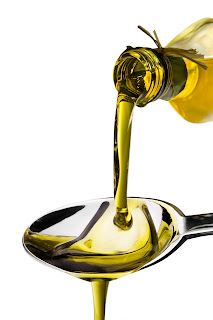We live in an age that spoils us with ease of access to
medications, remedies, and much more. I’ve mentioned before that I’m not
opposed to modern medicine—I’m just a big fan of using natural remedies
whenever possible. Humanity got by for thousands of years before medicine
as we know it today came along. And sure, some of the old “remedies” did more
harm than good, but not all. The base for many of our modern medicines are
based on herbal remedies—often just more optimized for the desired effect.
 |
| Rash? Try mineral water. |
There are lots of ailments our bodies can present us with,
from surface problems to internal ones. In this article, I’ll be covering some
home remedies for skin problems like rashes, acne, and burns. So before you run
to the store for that man-made medicine, try some of these out:
Rashes:
European mineral water like San Pellegrino is a great way to get instant relief
from itchy rashes, burns, and bumps. The minerals work like
anti-inflammatories, so spraying a small amount onto affected areas of the skin
can help provide instant relief.
Acne:
There are lots of all-natural scrubs and masks that can be used to treat acne,
but this is one of the simplest. Use coarse salt and neem oil to scrub
(gently!) your face and afterwards use plain yogurt to make a facemask that
stays on for 15-30 minutes. Salt is a natural antiseptic and neem oil is an
antifungal. And the lactic acid from plain yogurt helps exfoliate skin and
clear up skin blemishes.
Bug Bites:
Most homes have a regular supply of aspirin, but it’s not usually used for bug
bites. Aspirin contains salycilic acid, though, which is the main active
ingredient in many acne medications Crushed aspirin mixed with water forms a
paste that when applied to irritated skin can help relieve redness and
inflammation.
 |
| Psoriasis? Eczema? Use olive oil to seal skin. Image: Shutterstock |
Burns:
Most of us have burned ourselves at some point in time. Sunburns, curling iron
burns, and oven burns all do the same thing to our skin—and it doesn’t feel
good. But I bet you didn’t know that burns can be treated with tea! Black and green teas contain
phytonutrients, which help reduce inflammation in blood vessels. To treat a burn
with tea, just soak a dishrag with cold tea and apply it to the burned skin.
Next time you find yourself in need of a natural skin
remedy, try one of these out. Next week I’ll cover home remedies for internal
problems, like nausea and hangovers—so be sure to check back for more!
Remember that these are just suggestions to consider. Before
treating yourself, be sure to consult with your doctor or other licensed health
professional.







